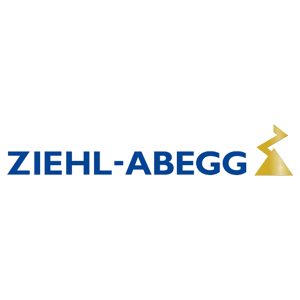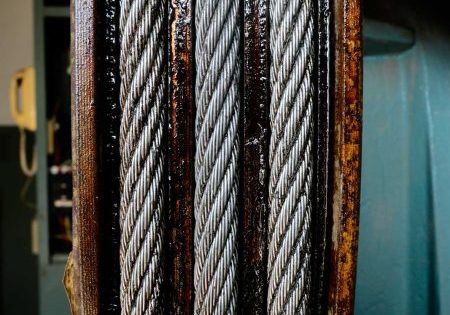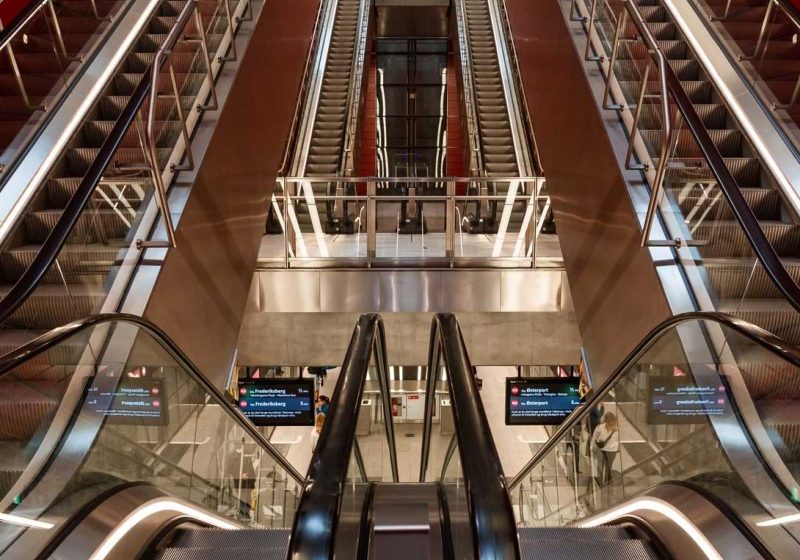The Sustainability of Lift Modernisation
May 30, 2023
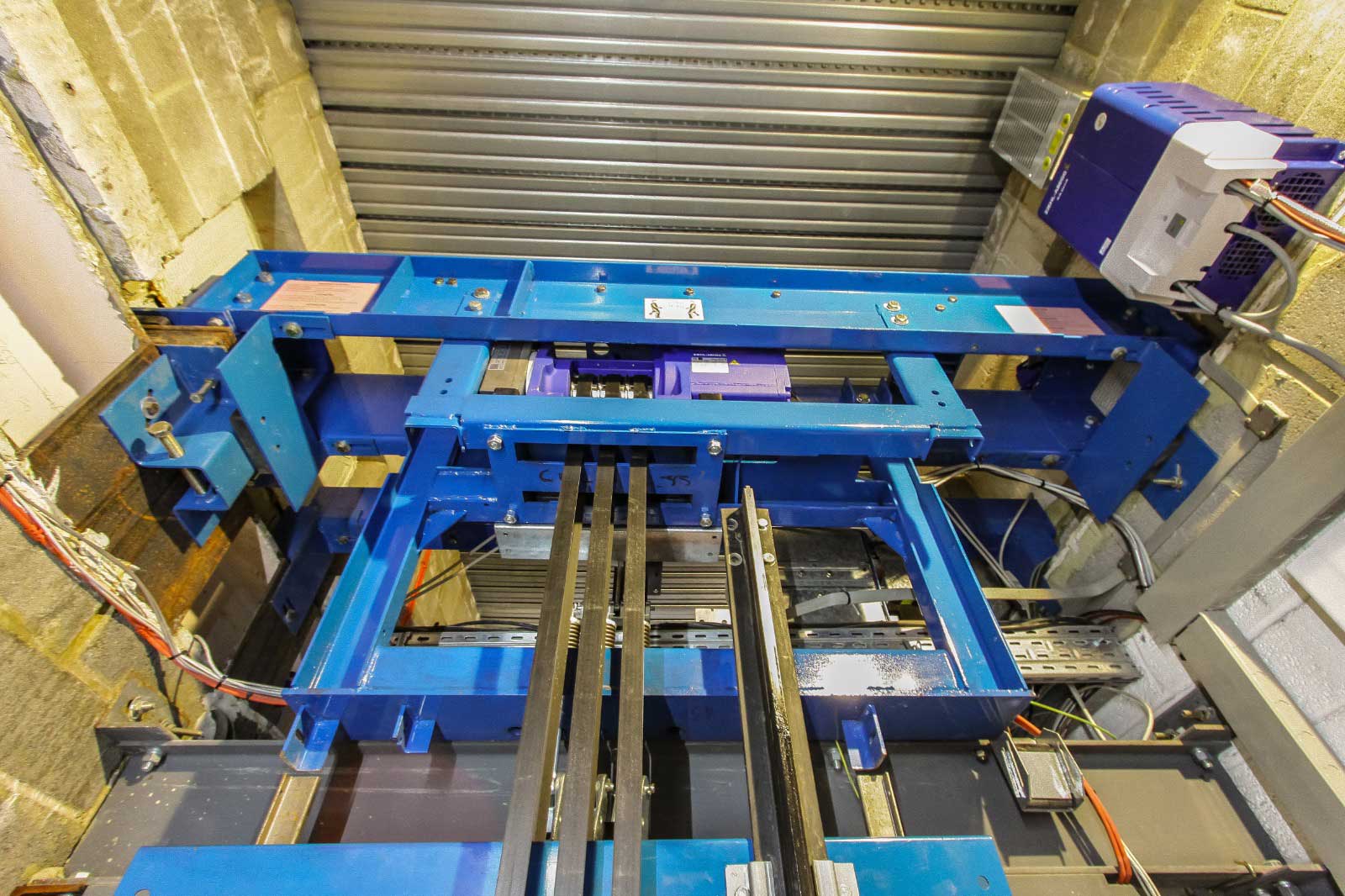
Sustainable solutions offered.
submitted by ZIEHL-ABEGG
Buzzwords such as CO2 emissions, energy efficiency and sustainability are coming through to us with more and more urgency every year, both in our professional and private lives. ZIEHL-ABEGG also deals with precisely these topics on a daily basis and continuously develops new innovative solutions on the market.
The U.K. has a very buoyant lift industry with thousands of new lift and modernisation projects completed each year. It’s a market that keeps growing year on year with new lift packages imported from Europe and farther afield, along with modernisations completed by U.K. companies to bring older lifts up to current standards.
New Lift Modernisation Vs. Partial Lift Modernisation
Whilst using a complete new lift package for modernisation has its advantages, on the other hand there is a clear sustainability advantage when it comes to partial modernisation along with reductions in carbon footprints, less demand on raw materials and manufacturing labour.
The trend in the market currently is to use a gearless machine with a variable-voltage, variable-frequency (VVVF) inverter drive to control the gearless machine. Gearless machines have a much higher efficiency rating compared to geared machines — especially at partial load condition — and will, over time, cost less to run, produce less heat and run much quieter compared to a geared machine.
Many new lifts in the industry are sold as closed protocol; this means that all parts within the lift can only be swapped or upgraded with that particular manufacturer’s parts. Often, interrogation of lift controller information and inverter settings can also only be done with a specific manufacturer’s tool. The major disadvantage of this is that the end client is tied into a contract with said lift controller manufacturer if something goes wrong.
Modernisation of these packages is becoming increasingly more possible with equipment manufacturers offering modernisation products that can be retrofitted into existing equipment. A classic example would be if a lift motor needed to be upgraded. With a closed protocol package, the customer is tied to getting a new machine from the original lift manufacturer. However, if the customer was to do a partial modernisation of the lift (like a back-to-guides modernisation) they could also upgrade the controller to make the lift open protocol.
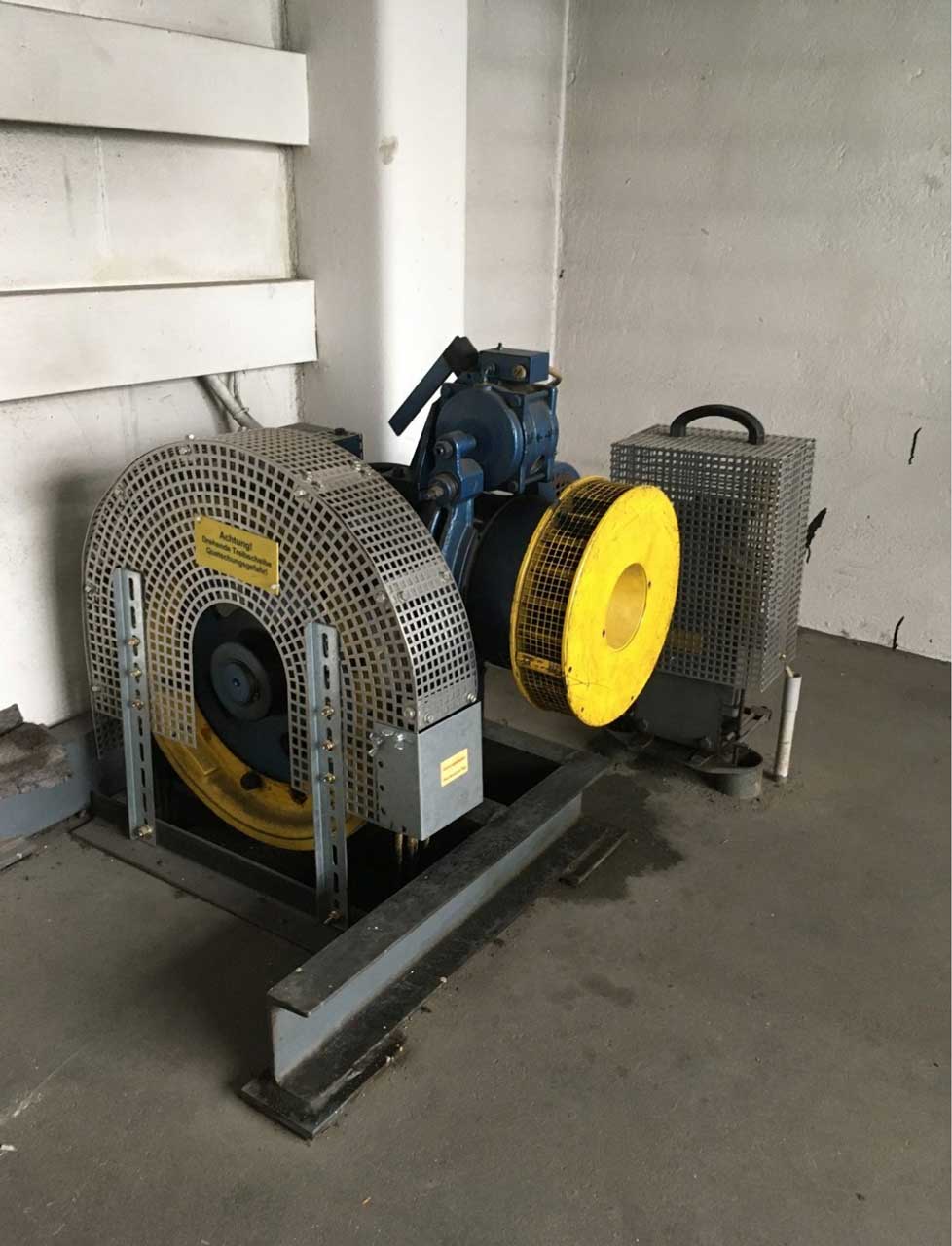
Lift machine manufacturers now offer many adaptable solutions for what were originally difficult-to-modernise machines, whether this be machines mounted on guide rails or traction machines using belts as the traction material. These open protocol solutions offer the end user the ultimate flexibility of a sustainable modernisation.
Space can also be a key factor for modernisation: Will the new gearless machine fit in place of the old geared or gearless machine? Plenty of machine types are now available on the market from some of the most well-established electric motor manufacturers that are space-saving alternatives to the traditional gearless machine.
New lift packages are frequently becoming more available with open protocol equipment, a much larger advantage for the end user as parts can be replaced with third-party components, and the service contract can be negotiated with a number of lift companies over the life of the lift. These also offer a fantastic alternative solution to modernisation; however, there is normally heavier engineering involved.
Improving Energy Efficiency in the Elevator System
Regeneration (regen) devises can also be considered in the modernisation solution, especially on buildings with a high travel distance.
Due to the weight distribution of the payload and counterweight, regenerative travel occurs in traction lifts. The motor acts as a generator and the DC link circuit voltage of the frequency inverter rises beyond design values. In typical lift systems, this energy generated is burnt off as heat with a brake resistor. In modern times, we are more conscious of environmental protection, shortages of energy resources and rising energy costs, as well as the resulting increased demands for energy efficiency and sustainability, which are calling this approach into question and demanding solutions to utilise the unused energy potential.
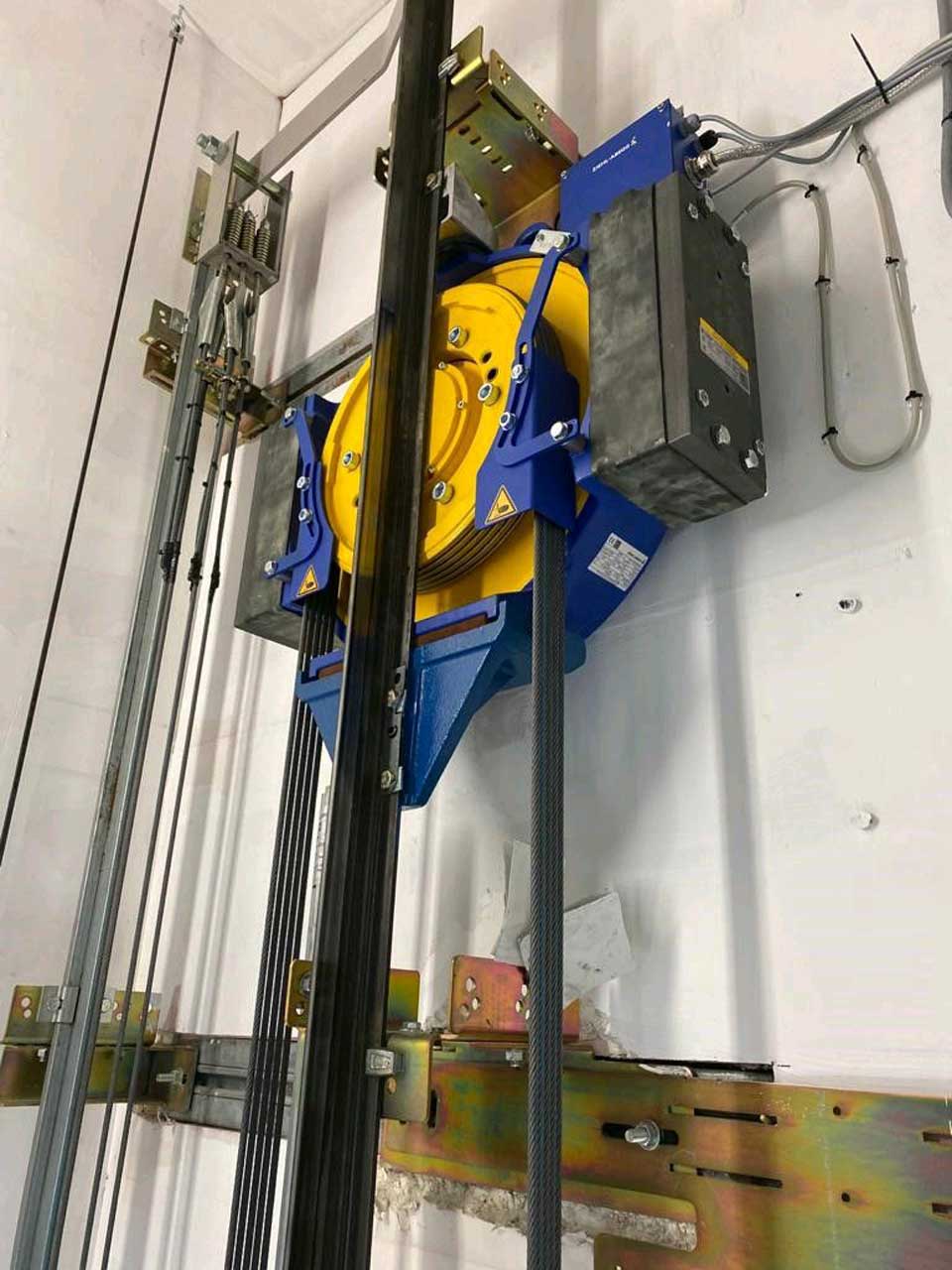
There are, however, now solutions on the market to regenerate the wasted energy into electrical power to be used again in the building’s electrical system. A good example of this would be a regen or recuperation drive, which takes this excess energy and turns it back into usable power.
Whilst using a complete new lift package for modernisation has its advantages, on the other hand there is a clear sustainability advantage when it comes to partial modernisation along with reductions in carbon footprints, less demand on raw materials and manufacturing labour.
Summary
What are the key sustainability advantages for modernisation, rather than a “new lift modernisation”:
- Less engineering in the shaft: many of the existing figures, fittings and steelwork can still be used.
- Some of the high-quality components that are not closed protocol can be reused.
- Less raw materials and labour costs involved with modernisation over a new lift package
- Quicker delivery of the completed lift
- Less building works; in theory a quieter working environment
- Retrofitting of regenerative devices will reduce the energy usage of the lift, in turn saving money for the end user.
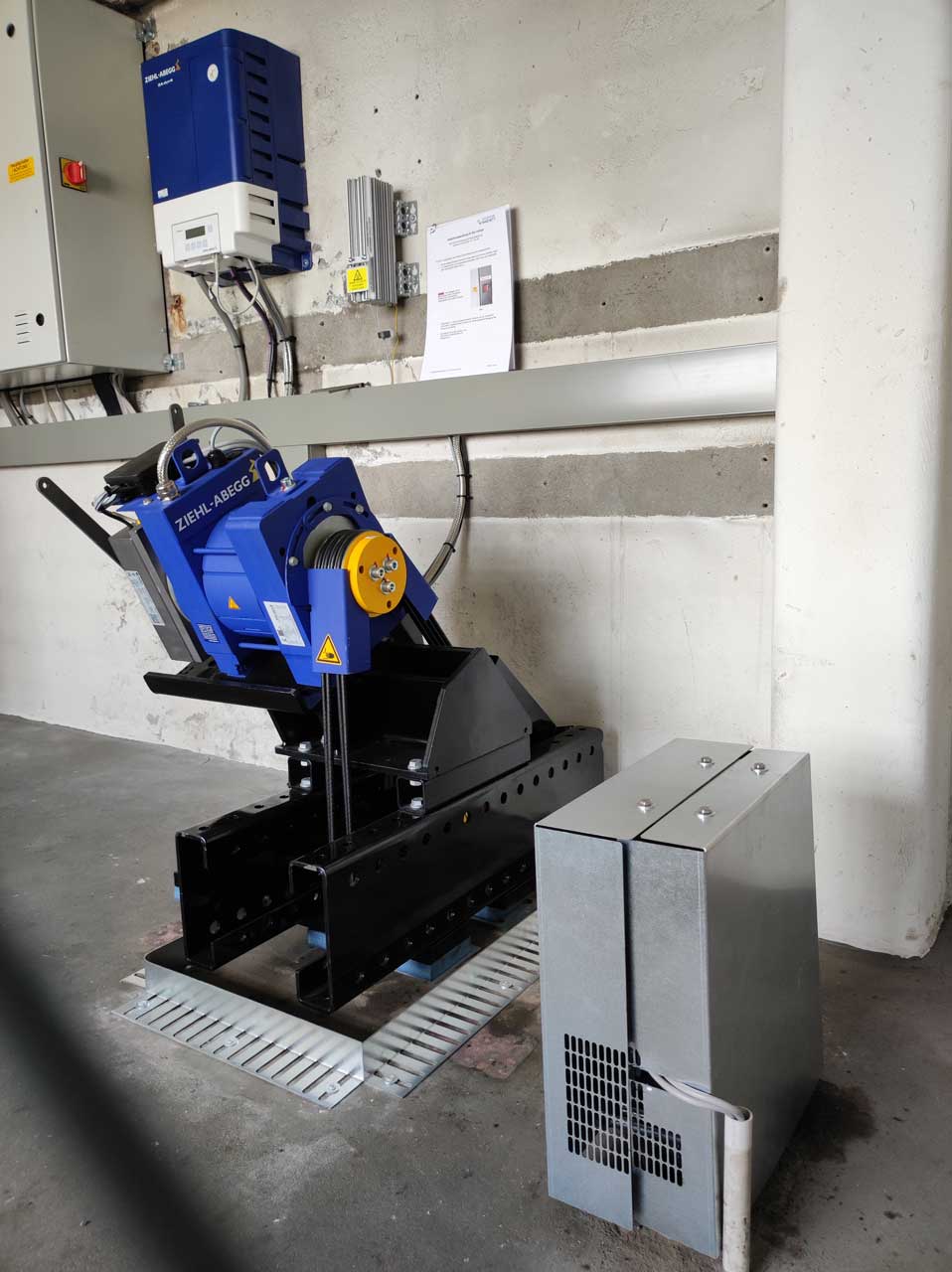
Sustainability, energy recovery and efficiency are our constant focus in development, manufacturing and delivery of the products
ZIEHL-ABEGG provides its customers with an increasingly broad product portfolio and the possibility of manufacturing sustainable and environmentally friendly lift systems. As a manufacturing group, it’s our focus and responsibility to make an important contribution to the reduction of CO2 emissions.
Get more of Elevator World. Sign up for our free e-newsletter.
